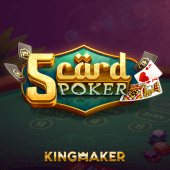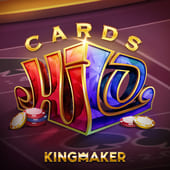Nine: A Statistical Deep Dive into the Premier Cards Game

Welcome to a quantitative analysis of **Nine**, a premier **cards game** that combines chance with strategic depth. This breakdown focuses on the probabilities and optimal strategies that define high-level play. We recommend using the Nine Demo to test these statistical models. The objective of **Nine** is simple, but achieving consistent success requires a data-driven approach. This guide will help you understand this exceptional **cards game**.
Optimal Betting Strategy: A Decision Tree Analysis
Initial Hand Dealt
Hand Value: 8 or 9 (Natural)
Optimal Action: STAND. Probability of win is >85%. This is the core principle of the **Nine** **cards game**.Hand Value: 6 or 7
Optimal Action: STAND. The risk of drawing a card that lowers your score outweighs the potential gain. Test this in the Nine Demo.Hand Value: 0 to 5
Optimal Action: DRAW. The probability of improving your hand is statistically significant. Mastering this rule in the **Nine** game is crucial. Play Nine at JL Boss Games to practice.This statistical model for the **cards game** **Nine** provides a baseline for every decision. Deviations should only be considered with advanced card counting techniques, which you can practice risk-free with the **Nine Demo**.
Hand Ranking Probabilities in Nine
Natural Nine (Highest Rank)
Natural Eight
Seven
Descending Value
Baccarat (Lowest Rank)
Understanding the value of your hand is paramount in the **cards game** of **Nine**. The goal is always to get as close to a total of nine as possible. The simplicity of this system is what makes **Nine** so appealing. Use the Nine Demo to familiarize yourself with scoring. Start your JL Boss Slot Login and play **Nine** today.
Historical Payout Analysis (RTP)
| Bet Type | Payout Ratio | House Edge (%) |
|---|---|---|
| Player Win | 1:1 | 1.24% |
| Banker Win | 1:0.95 | 1.06% |
| Tie | 8:1 | 14.36% |
The table above quantifies the risk and reward for each primary bet in the **Nine** **cards game**. Statistically, the Banker bet offers the lowest house edge, making it the most favorable long-term option. The Tie bet, while offering a high payout, carries a significantly higher risk. Use the Nine Demo to see how these probabilities play out over time without risking capital. Mastering **Nine** means understanding these numbers.
Deconstructed Game Rules: An Accordion Guide
The Objective
The primary goal in **Nine** is to bet on the hand that you believe will have a total value closest to nine. You can bet on Player, Banker, or a Tie. This fundamental concept is the heart of this classic **cards game**.
Card Values
Aces are worth 1 point. Cards 2 through 9 are worth their face value. 10s, Jacks, Queens, and Kings are worth 0 points. If the total exceeds 9, the first digit is dropped. For example, a 7 and a 6 (total 13) result in a hand value of 3. Practice this on the Nine Demo.
The Third Card Rule
Complex drawing rules determine if a third card is dealt. These are fixed and not up to the player. The best way to internalize these rules is through gameplay. Play Nine now on JLBOSS to experience it firsthand. The **Nine Demo** is an excellent tool for learning these nuances.







